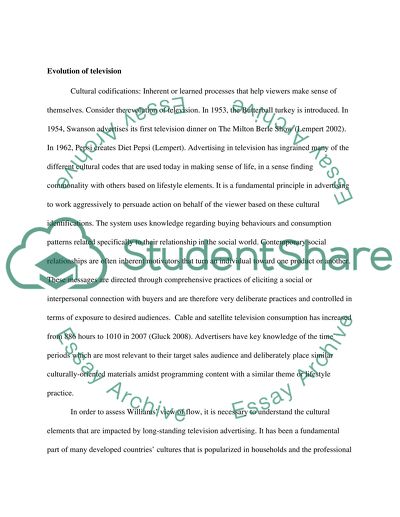Cite this document
(“Television, contemporary output and critical analysis of Raymond Essay”, n.d.)
Television, contemporary output and critical analysis of Raymond Essay. Retrieved from https://studentshare.org/media/1572944-television-contemporary-output-and-critical-analysis-of-raymond-williams
Television, contemporary output and critical analysis of Raymond Essay. Retrieved from https://studentshare.org/media/1572944-television-contemporary-output-and-critical-analysis-of-raymond-williams
(Television, Contemporary Output and Critical Analysis of Raymond Essay)
Television, Contemporary Output and Critical Analysis of Raymond Essay. https://studentshare.org/media/1572944-television-contemporary-output-and-critical-analysis-of-raymond-williams.
Television, Contemporary Output and Critical Analysis of Raymond Essay. https://studentshare.org/media/1572944-television-contemporary-output-and-critical-analysis-of-raymond-williams.
“Television, Contemporary Output and Critical Analysis of Raymond Essay”, n.d. https://studentshare.org/media/1572944-television-contemporary-output-and-critical-analysis-of-raymond-williams.


